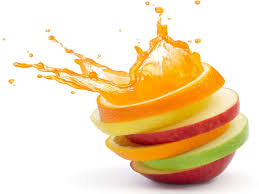
Share On Social!
Latino parents have increased the amount of 100 percent fruit juice that they allow their children to consume, according to a recent study by the University of California at San Francisco.
The American Academy of Pediatrics (AAP) states that 100% fruit juice can provide the body with essential vitamins and minerals, but this should not be confused with fruit drinks that are often made with unhealthy amounts of added sugars and flavoring syrups.
Additionally, if a child consumes more juice than recommended they could experience weight gain, cavities and tooth decay, and be at risk of type II diabetes. Infants and toddlers that get more than the recommended amounts of juice have additional risks of experiencing diaper rash and diarrhea. Fruit juice should not be used when dehydrated and ill, or when the child is already experiencing diarrhea. When served juice, toddlers should drink juice from a cup, and not be allowed to graze on bottles and sippy cups for throughout the day, even if the amount of juice in the container abides to the daily recommended amounts, and contains 100% fruit juice.
American Academy of Pediatrics Daily Juice Guidelines
| Age: | Recommendations: |
| Infants younger than 6 months | No fruit juice, no nutritional value for young infants. |
| 1 -6 years of age | 4-6 ounces per day. Do not allow child to carry container throughout the day. |
| 7-18 years of age | 8-12 ounces per day. |
The CDC recommends reading labels so that added sugars can be identified if not clearly labeled. High-fructose corn syrup, fructose, fruit juices concentrates, honey, sugar, syrup, corn syrup, sucrose and dextrose are often found on labels of juices. If 100% juice can not be found, water, fat free and low fat milk may be served alternative to fruit juice.
Refer to the AAP’s fruit juice recommendations and research to learn more.
By The Numbers
74
percent
of Latino kids have had a sugary drink by age 2 (vs. 45% of white kids)



